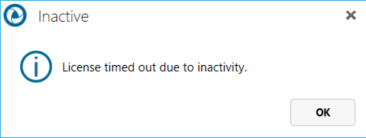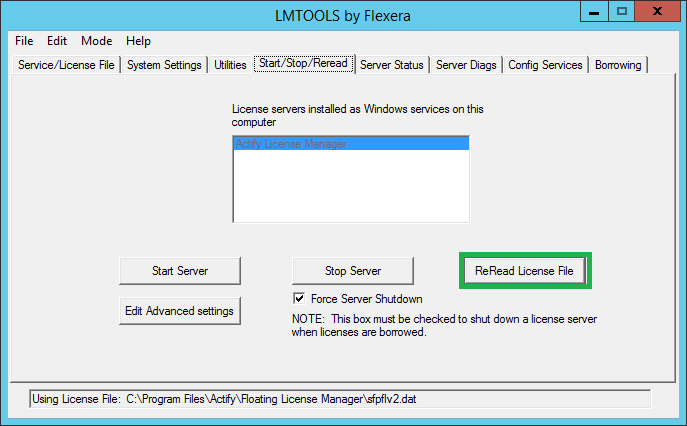Floating License Adding Timeout Options
How Timeout Works in SpinFire
The Timeout setting for floating licenses ensures that inactive sessions automatically release their license back to the pool after a specified period. This helps optimize license availability, preventing unused seats from being locked indefinitely and ensuring that resources remain accessible to active users.
SpinFire Ultimate supports two timeout options:
TIMEOUT – Specifies a timeout period (in seconds) for a specific license feature.
TIMEOUTALL – Applies a timeout period to all floating license features.
When a user leaves SpinFire idle and the timeout value is reached, their license is released, and they are placed in Reader Mode. In this mode, users can still view files but cannot perform licensed actions until a new license seat is available.
Timeout Warning: One minute before reaching the timeout threshold, SpinFire notifies the user with a message displaying the remaining time before their license is released.

Avoiding Timeout: Users can prevent their session from timing out by clicking OK when prompted.
License Release: If the timeout expires, the system informs the user that their license has timed out due to inactivity.

Reader Mode: Once the license is released, the user is placed into SpinFire Reader Mode, which allows file viewing but restricts access to licensed features.

Reactivating a Floating License
To regain a floating license seat after timing out:
Navigate to Options > Activate.
Click Activate Floating License.

This process requests a new license seat, provided one is available.
How to Configure Timeout for Floating Licenses
Step 1: Locate or Create the Options File
The timeout settings are managed in the actify.opt file, which is stored in the Floating License Manager installation directory:
C:\Program Files\Actify\Floating License Manager
If the
actify.optfile does not exist, create a new text file in this directory and rename it actify.opt.
Step 2: Configure Timeout Settings
Open
actify.optusing a text editor (e.g., Notepad).To set a timeout for all floating licenses, add the following line:
CODETIMEOUTALL 3600The value 3600 represents the timeout in seconds (1 hour). Adjust as needed.
Note: The seconds parameter must minimally be 900 seconds (or 15 minute).
Step 3: Save and Restart the License Server
Save and close the
actify.optfile.Open LMTools (Floating License Manager utility).
Navigate to the Start/Stop/Reread tab.
Click ReRead License File to apply the new timeout settings without restarting the server.

Best Practices
Choose an appropriate timeout period – A shorter timeout (e.g., 15–30 minutes) can help maximize license availability, while a longer timeout allows more flexibility for users.
Monitor license usage – Regularly review usage data to determine if the current timeout settings are effective.
Test before full deployment – Implement the timeout setting on a test system before applying it to all users to ensure it meets your organization's needs.
By configuring timeout options, you can ensure that inactive sessions do not unnecessarily occupy floating licenses, improving overall efficiency and availability.
Note: You can also use the TIMEOUTALL option instead of the TIMEOUT option. This option will apply the time out on all items so if you're also using SpinFire 10.x and want to apply a timeout to those users, the the TIMEOUTALL will cover everything.
The format of the TIMEOUTALL option is:
TIMEOUTALL [seconds]

